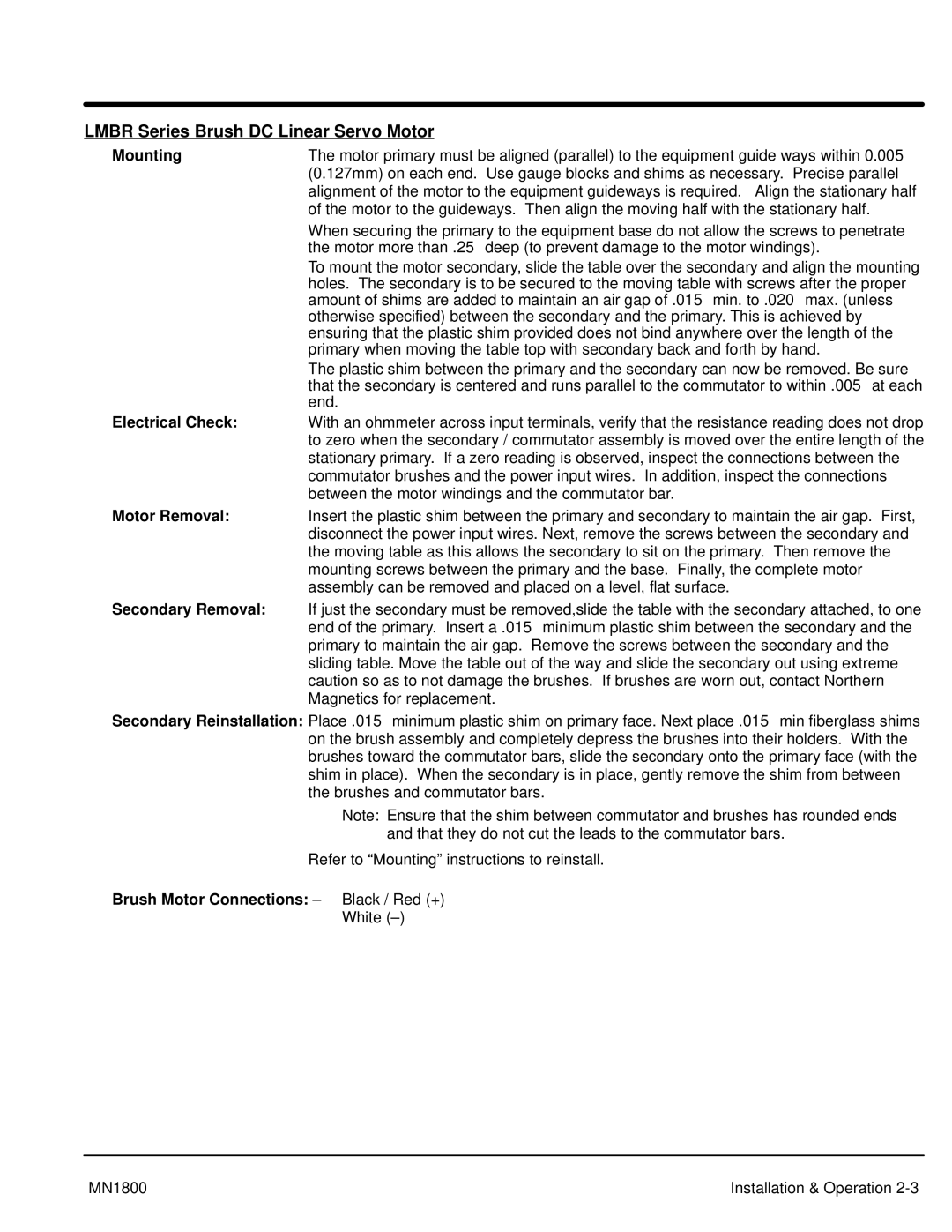iMN1800 specifications
The Baldor iMN1800 is a comprehensive industrial motor drive, engineered for a wide range of applications in various sectors such as manufacturing, robotics, and automation. This drive exemplifies Baldor's commitment to innovation, performance, and efficiency, offering users advanced features that cater to modern industrial demands.At the heart of the iMN1800 is its state-of-the-art motor control technology, designed to provide precise control over motor speed and torque. This is achieved through a sophisticated algorithm that adjusts the motor's performance in real-time, ensuring reliability and efficiency. The iMN1800 is compatible with various forms of electric motors, including AC induction and permanent magnet synchronous motors, making it versatile for numerous applications.
One of the standout features of the Baldor iMN1800 is its energy efficiency. It complies with various energy standards, which not only helps reduce operational costs but also minimizes the environmental impact associated with industrial operations. With an impressive efficiency rating, the iMN1800 contributes to lower energy consumption, making it an economically viable solution for businesses aiming to enhance sustainability.
In terms of connectivity, the iMN1800 incorporates advanced communication protocols such as Ethernet/IP and Modbus, allowing for seamless integration into existing industrial networks. This feature facilitates real-time monitoring and control, empowering operators to make informed decisions based on live data. The user-friendly interface enables quick access to essential parameters for both configuration and diagnostics, ensuring ease of use for technicians and engineers alike.
Moreover, the iMN1800 is built with robust construction materials, ensuring durability in demanding environments. Its rugged design allows it to withstand harsh conditions, including high temperatures and vibrations, common in industrial settings. This reliability contributes to reduced downtime and maintenance costs, promoting a more productive work environment.
The Baldor iMN1800 also features advanced safety mechanisms, including overload protection and short-circuit protection, guaranteeing the safety of both personnel and equipment. These attributes align with modern safety standards, making it a trusted choice for industries that prioritize workplace safety.
In summary, the Baldor iMN1800 is a top-tier industrial motor drive that combines advanced motor control technology, energy efficiency, robust construction, and enhanced safety features. Its flexibility and connectivity make it a valuable asset for diverse industrial applications, ultimately driving operational efficiency and effectiveness.

